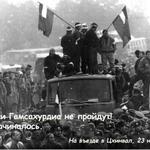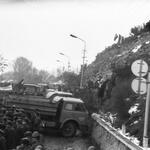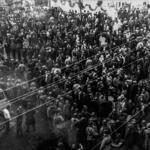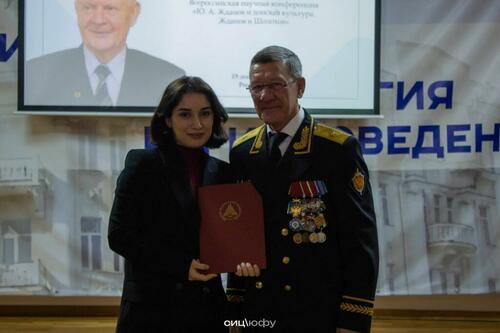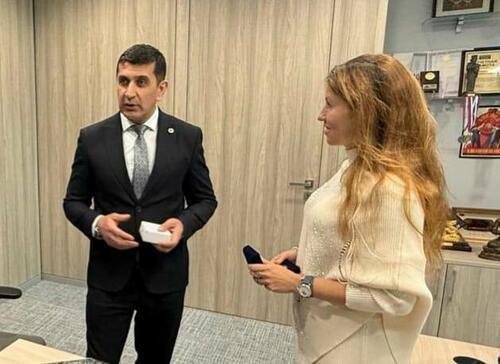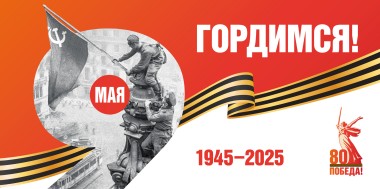Significant date
On Saturday, the public of the Republic will lay flowers at the memorial of courage and national unity, installed at the entrance to Tskhinval on the Priss Upland, in memory of the events of November 23, 1989. The very place where 30 years ago residents of Tskhinval blocked the path of the Georgian nationalists.
November 23, 1989 is the starting point of the recent history of South Ossetia. There are several significant dates in this short history, each of which has its own purpose, important, turning dates, which became state, and, more importantly, truly national holidays. But November 23, 1989 will forever remain a special date not only in history, but also in the ideology of South Ossetians. More precisely, national ideology is built on such dates.
This day is usually called the "reference point", but it can also be called the "point of no return." Neither the previous, nor the new generations of the Georgian politicians, the public, have fully understood what exactly happened on November 23, 1989? The frightening action, senseless from the point of view of political logic, became the quintessence of the Georgian neo-Nazism, which was gaining strength, and demonstrated its true ugly essence.
If all the subsequent actions of the Georgian authorities were tried to be justified “by the struggle for the territorial integrity of Georgia,” then at that time South Ossetia had not only attempts to change its status - similar ideas did not sound at the level of rally rhetoric. In South Ossetia, there was a peaceful opposition to the policy of neo-Nazism: rallies and hunger strikes against the transition to the Georgian language of education, office work, against regularly voiced threats of the elimination of autonomy and insults against the Ossetian people.
The campaign to Tskhinval was not a surprise; it was a continuation of the policy pursued by Georgia. By this time, anti-Ossetian politics in Georgia had become decisive and assumed serious proportions: from historical falsifications to domestic Ossetinophobia. And at the same time, there was still a glimmer of hope: they will come to their senses, will not cross the line of "no return", the Union center — Moscow will intervene…
All attempts on the part of South Ossetia to change the situation, to influence the growing aggressiveness of Georgia by peaceful, civilized methods remained unsuccessful.
On November 22, the newspaper “Sakartvelo” published an appeal “To the Citizens of the GSSR”, signed by Z. Gamsakhurdia, I. Tsereteli, I. Batiashvili, where they openly called on the people to participate in the rally in Tskhinval. “That day the entire Georgia will move to the capital of Tskhinvali. Gathering at 9 am at the Sports Palace and the House of Cinema. Transport mobilized. Everyone to Tskhinvali! God with us! Long live, the independent Georgia!”, - this is how the published appeal ended.
All the political forces of the then Georgia participated in that campaign of the hordes of thousands. All parties were of a Nazi orientation and each had an armed group made up of criminals, released under an amnesty from Georgian prisons. And the official Communist government of Georgia led the campaign.
The true goals of the “peace campaign” became apparent later, when the retreating “protesters” blocked the city and launched terror on roads and in nearby villages.
The fact that the rally is far from peaceful, was later admitted.by its organizers. And the creation of Georgian gangs on the territory of South Ossetia in places with a compact Georgian population was not accidental.
The official preliminary conclusion of the commission investigating the events of November 23, 1989 and the following period says: “After the corresponding preparatory work on November 23, more than 30 thousand arrived in Tskhinval on more than 400 buses and cars (from 10 to 40 thousand are found in various sources.) protesters. Knowing the presence of armed militants among the participants of the rally and fearing for unpredictable consequences, the youth of the city blocked their path.”
The confrontation lasted 27 hours. On November 24 evening, the Georgian column turned back. The abovementioned conclusion also noted: “The failed attempt to enter the city did not embarrass the informals. They set up pickets of armed men on the Gori-Tskhinval highway, in the Georgian villages of the Tskhinvali and Znaur districts, involving part of the local population of the Georgian nationality. As a result, communications leading to South Ossetia, as well as roads within the region itself, were blocked, as a result of which the whole region was in blockade. Thus, began an undeclared war against the Ossetian population of South Ossetia.”
It is not the actions of the Georgian side that are of historical interest - everything became clear with them. The guys of Tskhinval -ordinary, grew up in Soviet reality, standing, by the way, at the entrance to their capital with Soviet attributes, opposed to Georgian separatism. Whence suddenly awoke this spirit, this sense of human and national dignity? A small unarmed. group blocked the way to thousands of aggressive crowd. Genetic memory woke up - this was not taken into account in Georgia.
One can’t try to break Ossetians by force. One can’t go to war in Ossetia during the days of honoring St. George - ahead of the defenders there is always a heavenly patron. and on other days it is also not recommended.
Thus, began the contemporary history, in which later there will be wars and feats. And there will be many bad things. The spirit of unity will be lost, unable to withstand the hurricanes of time. But November 23, 1989 will remain the Day of Courage and Unity. It will remain an appeal to future generations - be worthy of them, those who stood at the Zguder height above the city.

